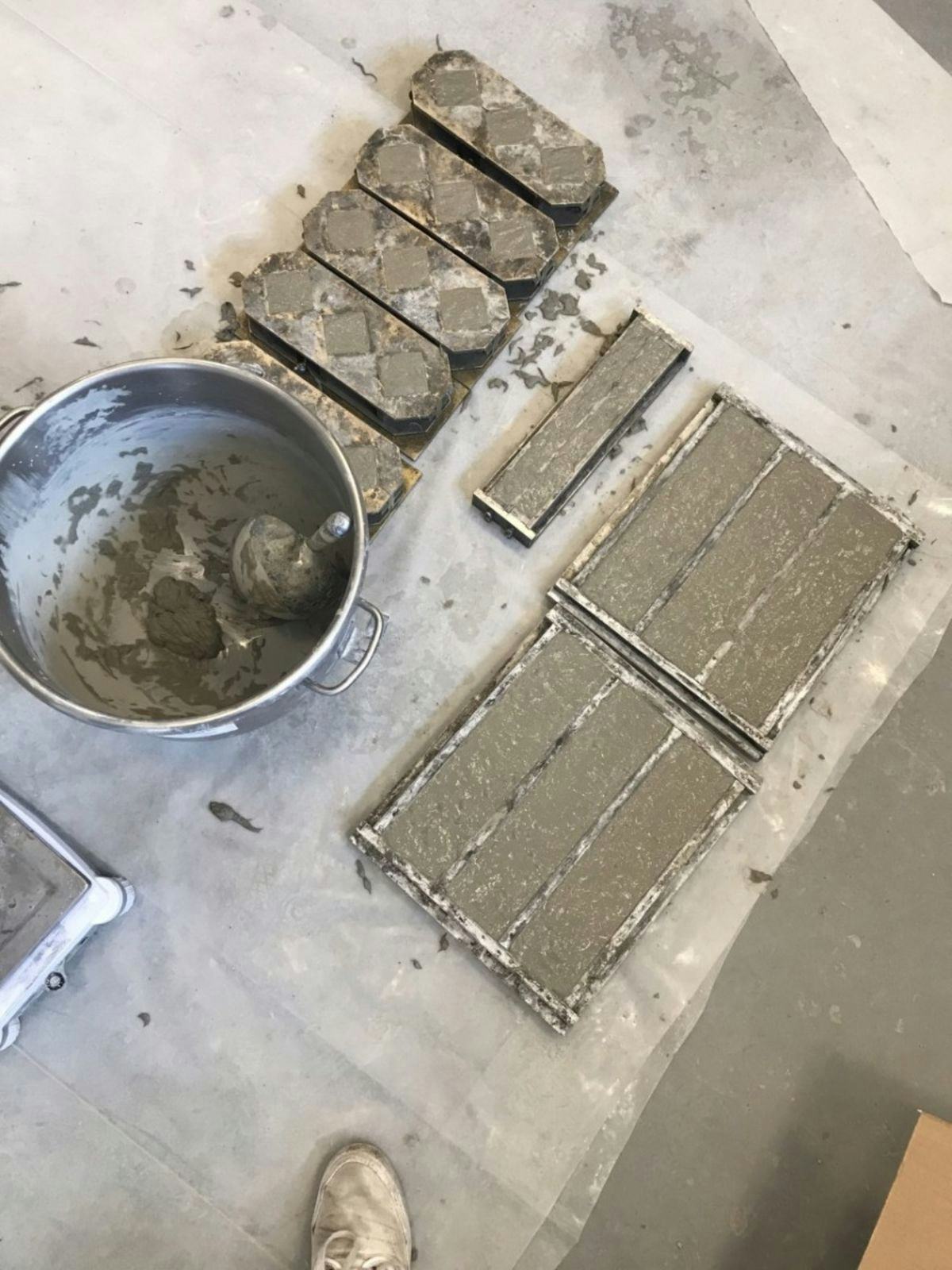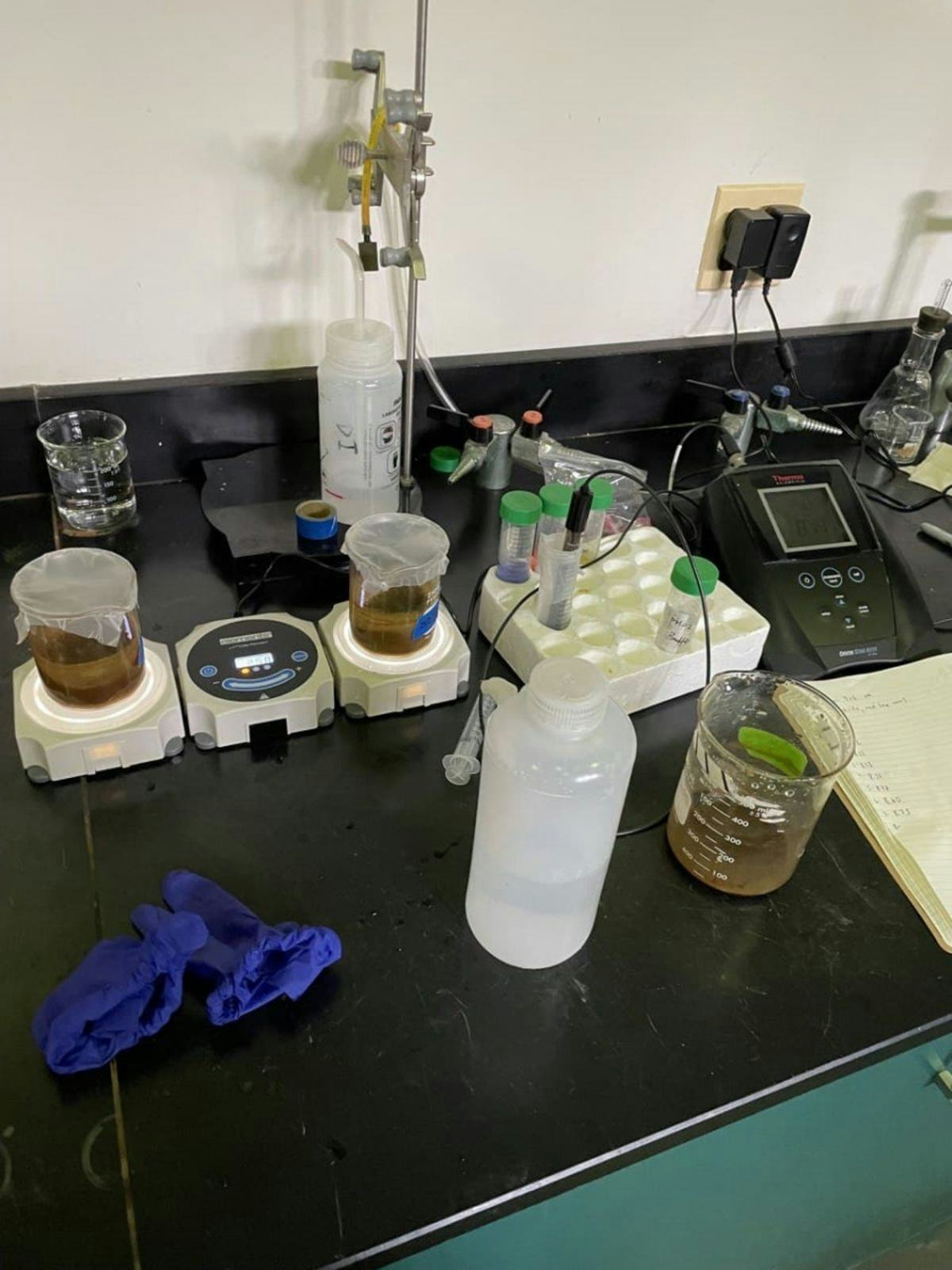Engineering Students Soak Up the Learning During Summer Research Projects
Enterprising undergraduate students at Stevens appreciate the unique hands-on learning and lab experiences gained during their summer research activities
What did you do this summer? Did you create a web interface to share and analyze NASA’s satellite observations of soil moisture? Develop lightweight ultra-high-performance concrete? Conduct experiments on nitrate treatment in wastewater?
If you had been one of the 25 Stevens Institute of Technology undergraduate students who completed paid research projects with experts from the Department of Civil, Environmental & Ocean Engineering this year, these are just some of the intriguing options that would have been available to keep you engaged and educated between semesters.
Through the 10-week Stevens Innovation & Entrepreneurship Undergraduate Summer Research Program, professors and Ph.D. candidates from throughout the department train and supervise students in activities such as reading the background research, running experiments, and practicing their presentations, and hold regular meetings to check on their progress.
“When students know why and what they are doing, they will make the effort and produce something based on the knowledge they gained, and they will appreciate the process and feel it is fun and interesting,” said Weina Meng, assistant professor of civil engineering, who supervised seven students in this year’s program. “With the help of these students, we had two research papers published and five papers waiting to be submitted. We gave them chances to review our research manuscripts. They were very motivated when they saw their names in papers published in the top journals!”
Read on to learn more about the diverse engineering projects three of these enterprising student researchers completed during the summer of 2021.
‘Stevens offers students an excellent opportunity to learn about different kinds of engineering’
Peter Shikhman, who is studying computer engineering as member of the Class of 2023, has always been interested in puzzles.
“As I get older, the puzzles get more challenging,” he said. “One aspect I want to explore is life’s biggest puzzle, creating advancements in computing and robotics to allow us to explore and create a brighter future.”
This summer, he directed his problem-solving drive toward helping create an interactive Google Earth Engine web application that allows users to select a specific region of interest and generate a plot of soil moisture variability during the last six years. That data can then be used to assess flood risk or drought levels based on soil moisture estimates from the NASA Soil Moisture Active Passive (SMAP) remote sensing satellite, and also helping calibrate those readings to improve accuracy.
Working with Marouane Temimi, associate professor of civil engineering, Shikhman and three other Stevens undergraduate students processed field measurements of soil moisture from a series of ground sensors placed around Millbrook, New York. Their collected observations were used to validate the SMAP measurements from space and analyze the spatial variability of soil moisture. Then they completed the coding to put the information on a Google Earth Engine interface.
“One challenge was creating a way for users to come to the site and select a region they wished to get data from,” Shikhman recalled. “During our weekly meeting, my partner and I asked for help. One of the graduate students had previously had the same problem, and he directed us to online resources that helped us create the final version of our web app.”
Although the summer’s work was primarily done online, the students are looking forward to a planned visit to upstate New York this fall to see where the data came from, inspect the deployed sensors, and conduct joint field campaigns with NASA, U.S. Department of Agriculture and National Oceanic and Atmospheric Administration scientists involved in the mission.
Shikhman has come away from this experience with a richer understanding of key civil engineering and computer engineering concepts, as well as the promise of publication in peer-reviewed papers.
“I had first-hand experience in soil moisture remote sensing, sensor manipulations and satellite data analysis,” he said. “I learned how soil moisture plays a crucial role in environmental, hydrological and atmospheric processes, and I learned about the multitude of uses for soil moisture data reading to support weather prediction, agricultural productivity and even human health. I also learned about Google Earth Engine, a useful tool to visualize global data and create interactive web applications displaying data relating to the Earth’s land and atmosphere.”
He might even have found a new career path.
“Stevens offers students an excellent opportunity to learn about different kinds of engineering, and gives students the tools we need to have an engineering mindset to solve problems through critical thinking,” he said. “As I am coming into my third year at Stevens, I have to start shifting gears and thinking about a career path. This research opportunity gave me a chance to apply my skills to the field of remote sensing and taught me that there are a variety of opportunities where computer engineering can come in handy. It opened up a field I may like to explore further.”
‘It has opened my eyes to the importance of materials in civil engineering projects’
Lily Stevenson, who is studying civil engineering as member of the Class of 2022, worked with Weina Meng to use polyethylene fibers, glass bubbles, and porous glass lightweight aggregate to create lightweight ultra-high-performance concrete (UHPC). In that process, she discovered that developing concrete is surprisingly reminiscent of one of her favorite hobbies.
“I learned just how similar concrete developing is to baking,” Stevenson said. “It made the research even more engaging because it felt familiar. We use large industrial stand-mixers that look exactly like KitchenAid mixers. We even had a few KitchenAid mixers in the lab for small batches! We would mix our ‘dry ingredients’ first and then incorporate our ‘wet ingredients.’ To cast samples, we would grease the metal casts before adding the concrete mixture, just like greasing a pan before putting cake batter in. Then we would let the sample cure and harden as if it were baking.”
As much as she enjoys time in her kitchen, Stevenson is sticking with engineering as her professional goal.
“Engineering is the perfect intersection of design, math, science and practical problem-solving, four things that I love,” said Stevenson, who is also a Stevens A. James Clark Scholar. “I am interested in cityscapes and urban design, and I hope that as a civil engineer, I will be able to help improve the cities that I call home.”
After having studied abroad in England in the summer of 2019 and completed a civil engineering internship in the summer of 2020, Stevenson decided to round out her undergraduate career with a summer research project this year. Teamed up with Meng, a Ph.D. student and one other undergraduate student, she worked to develop a lower-density UHPC that retains its superior strength, flexural performance and durability to facilitate enhanced structures such as taller buildings and longer bridges.
“Dr. Meng has undeniable command of the subject matter, but despite her superior knowledge and busy schedule, she took the time to communicate and connect with each student,” Stevenson noted. “Her expertise could be intimidating, but Dr. Meng is approachable and kind. This made her an excellent mentor. I gained a lot of knowledge about concrete that will prepare me for my civil engineering classes. I can’t wait to have Dr. Meng as a professor, and I am happily anticipating my concrete classes because I think I will be really prepared for them!”
The experience has also expanded her understanding of the tools she will need in her chosen career.
“This research opportunity was fascinating, and it has opened my eyes to the importance of materials in civil engineering projects,” she said. “Civil engineers work with concrete quite a lot, and the material used for a project can be far more imperative to its function than its structural design. It is exciting to think that the research I helped conduct this summer could affect the type of concrete I will be using. Maybe one day I will use this lightweight UHPC and get to say, ‘I helped make this.’”
‘I learned a lot about research and bench experiments’
Jagmeet Ashta, who is studying environmental engineering as a member of the Class of 2023, chose his major, Stevens and the Innovation & Entrepreneurship Undergraduate Summer Research Program for similar reasons – the opportunity to get hands-on, up-close and personal with his studies and the people around him.
“Stevens is a smaller school, and the environmental department is even smaller and more intimate, which I appreciate,” he explained. “Having personal relationships with professors and students is invaluable. This summer, I wanted to explore lab work and research. The Center for Environmental Systems (CES) was running interesting lab projects, and I appreciated being in a familiar setting to conduct this work.”
Ashta was one of five undergraduate students conducting experiments with Xiaoguang Meng, professor of environmental engineering, and other researchers at the CES. They used zero-valent iron (ZVI) to treat water to remove nitrate, which can cause excessive plant and algal growth leading to harmful toxins, and to remove fluoride, which can affect the metabolism of calcium and phosphorus in the human body.
“ZVI is a much cheaper alternative to existing nitrate treatments,” Ashta explained. “It also allows for the possibility of a direct injection into contaminated areas. We combined ZVI with other ions, such as copper, ferric, and ferrous, and other compounds like pyrite, to find the most effective treatment. It was important that the pH of water did not deviate too much from drinking water levels, and that other products from the reaction were not too high.”
As any scientist knows, ensuring consistency with experiments can be a challenge, and this team’s work was no exception.
“With almost every experiment, the initial data was inconsistent to a degree,” Ashta recalled. “We had to keep re-running the experiment until the data became more consistent. Redoing is in the nature of lab work. It is extremely rewarding once you can conclude it, and then you can use this data to help inform the progression of the experiment as a whole.”
Although Xiaoguang Meng and his Ph.D. student, Meng Ji, led the project, they involved Ashta and the other undergraduates heavily in the process.
“I was constantly talking to Meng Ji about the experiment, and I was able to bounce ideas and ask plenty of questions,” he said. “She had me do calculations and analyses that she could easily do, but had me do them for my own edification. This freedom and deep involvement made the whole process very worthwhile, and I learned a lot about research and bench experiments.”
It was Ashta’s first time in the lab, but it won’t be his last.
“I wasn’t sure if I would enjoy lab work, but I had a great experience,” he said. “Analyzing raw data, and understanding where and how the data came about, is also valuable, and adds a perspective that others who haven’t done research will not understand. I am going to continue working on these projects during the school year. In the future, I hope to work with research in the field or related to earth sciences, oceanography or sustainability. Precision is important, and that attention to detail will help in any job.”
In the lab, Jagmeet Ashta worked on treating tap water to remove nitrate. Inside each beaker is a solution simulating tap water with a certain concentration of nitrate. ZVI, with a certain concentration of another ion or compound, was added, and the solution was mixed for the run time of the experiment, which was typically eight hours. Each hour, the students would measure the pH and take a sample from each beaker for analysis.




